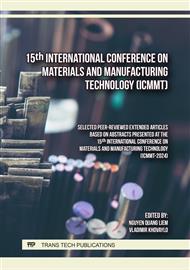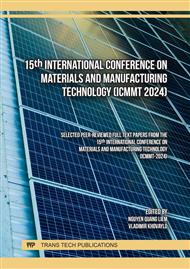p.27
p.35
p.41
p.51
p.59
p.67
p.77
p.85
p.93
Modeling of Automated Guided Vehicles in Material Transport within Flexible Manufacturing Systems Using Fuzzy Logic
Abstract:
Modern automated manufacturing environments are highly agile and are confronted with continuous change in market demands/customers’ requirements. Flexible Manufacturing Systems (FMSs) cater to the need of extensive flexibility and ability to manufacture different variety of batch quantity of components simultaneously in the highly dynamic environment. In FMSs, automated guided vehicle (AGV) systems are commonly used to control complex automated material handling systems. Path design as well as planning and control of AVGs are challenging problems for researchers. In this work, an attempt has been made to model AGVs in FMS using fuzzy logic technique as a modeling tool. A hypothetical FMS system with two AGVs, four processing stations, one buffer and an input/output station is considered. Parts routing, processing operations, allotted machines, processing time and part-mix variation are inputted. AGVs movement to be accomplished for movement of parts obtained is based on rule base consisting of ‘If – then’ statements. Movement of AGVs in FMS without any deadlock for moving the part in an optimized path so as to achieve maximum utilization of the system is aimed. The methodology is demonstrated with illustrative examples.
Info:
Periodical:
Pages:
77-83
Citation:
Online since:
September 2024
Authors:
Keywords:
Price:
Сopyright:
© 2024 Trans Tech Publications Ltd. All Rights Reserved
Share:
Citation:



